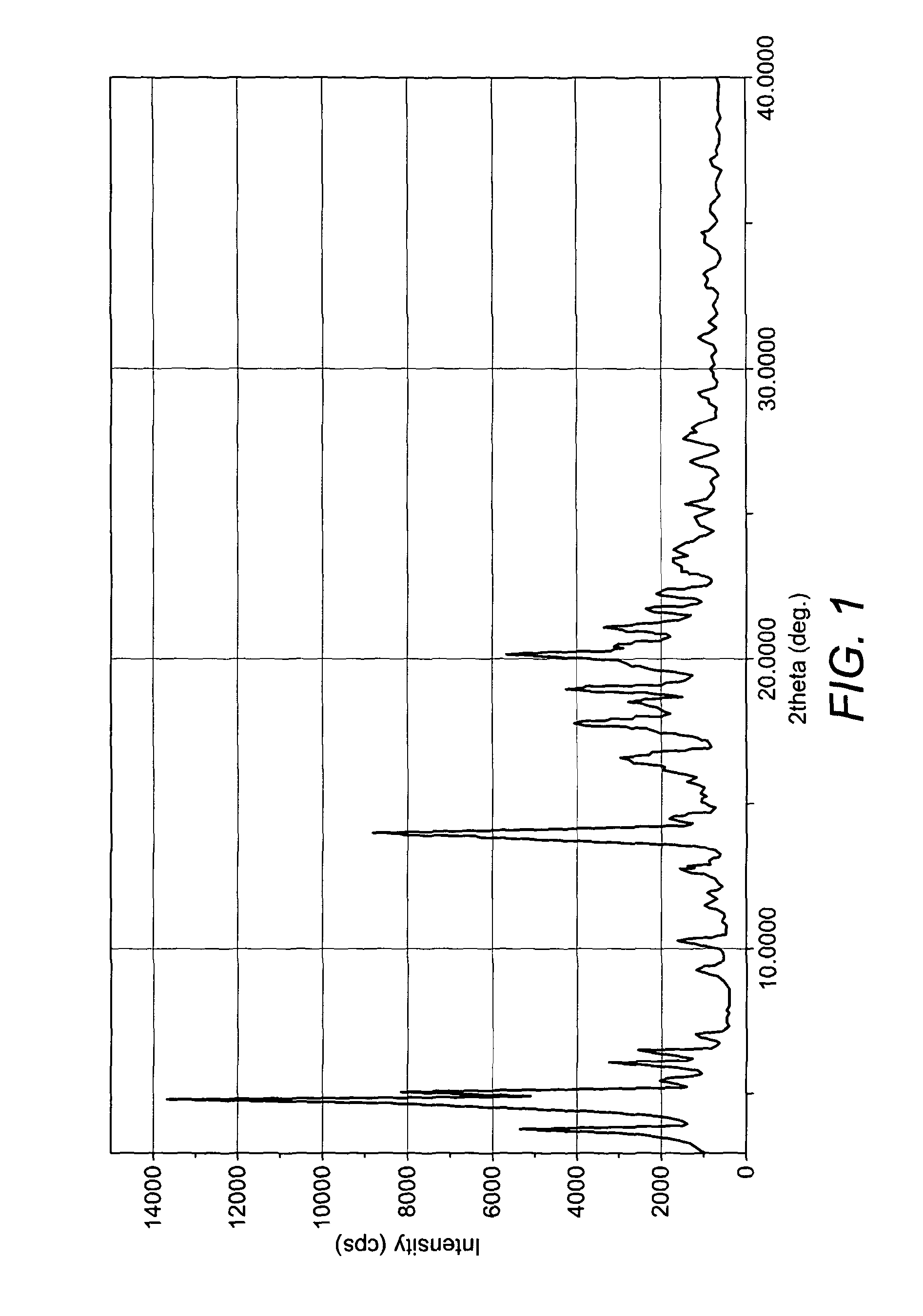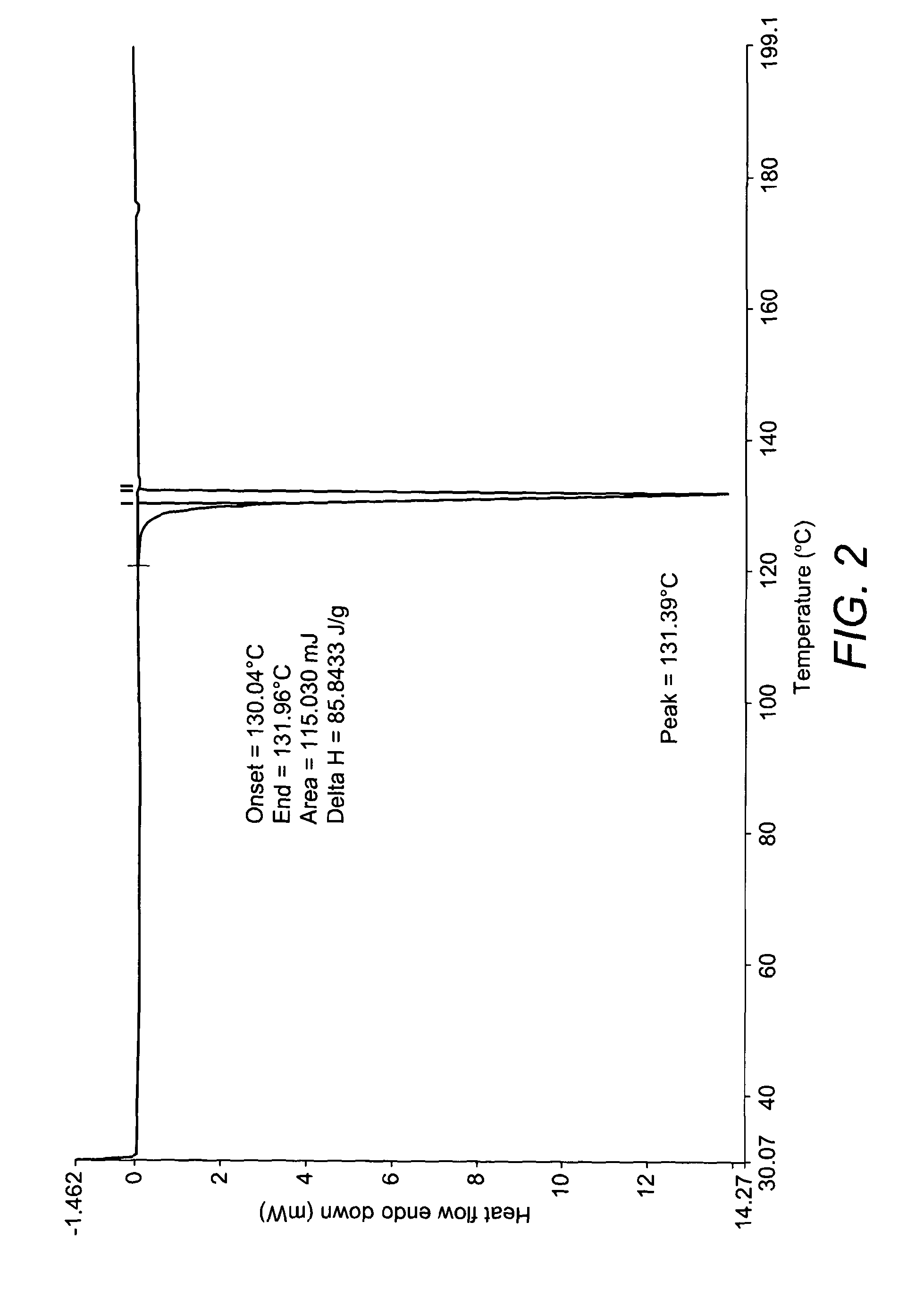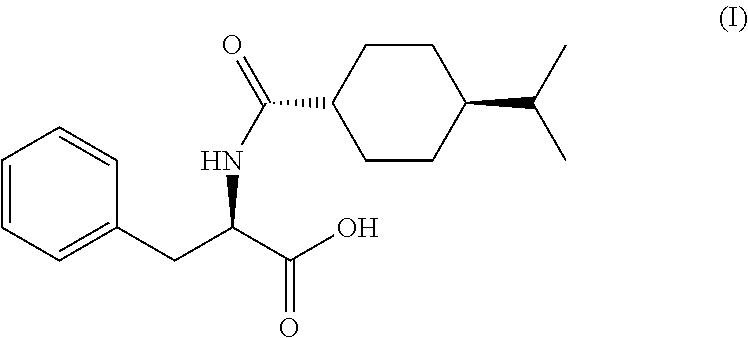Process for the preparation of nateglinide
a technology of nateglinide and ester, which is applied in the field of process for the preparation of nateglinide, can solve the problems of prolonging the filtration time, reducing the yield and purity of the product, and nateglinide ester being converted back to nateglinide alkyl ester, so as to reduce or substantially eliminate isomeric impurities
- Summary
- Abstract
- Description
- Claims
- Application Information
AI Technical Summary
Benefits of technology
Problems solved by technology
Method used
Image
Examples
example 1
Preparation of D-Phenyl Alanine Methyl Ester Hydrochloride (Compound IVa)
[0100]To a chilled solution of methanol (1000 ml), was charged thionyl chloride (100 ml, 1.361 moles) at 5° C.±3° C. under nitrogen atmosphere. D-Phenyl alanine (100 grams, 0.602 moles) was added at 5° C.±3° C. and further stirred for 30 minutes. The temperature was raised to 25° C. The reaction mass was further stirred for 12 hours and concentrated at 50° C. under reduced pressure to form a residue. The residue was stirred in toluene (500 ml). The solid was isolated by filtration, washed with toluene (2×500 ml) and dried at 50-55° C. under vacuum to yield the desired product.
[0101]Yield=130.0 grams
[0102]Efficiency=100%
[0103]Chiral Purity=100%
example 2
Preparation of D-Phenyl Alanine Methyl Ester Base
[0104]D-phenyl alanine methyl ester hydrochloride (130 grams, 0.6 moles) was stirred in dichloromethane (350 ml) at 25° C.±3° C. The reaction mass was then cooled to 10° C. and basified with aqueous ammonia (200 ml) at 10° C.±3° C. within 30 minutes. The reaction mass was further stirred and the organic phase was separated. The aqueous layer was extracted with MDC (300 ml). Combined organic phases were washed with water (300 ml), followed by saturated sodium chloride solution (300 ml). The organic phase was dried on sodium sulphate and concentrated at 35° C. under reduced pressure to obtain the product.
[0105]Yield=108.0 grams
[0106]Efficiency=100%
example 3
Preparation of Nateglinide Methyl Ester without Using HOBT
[0107]Dissolved D-phenyl alanine methyl ester (108 grams, 0.6 moles) in dichloromethane (590 ml) at 25° C. under nitrogen atmosphere. The reaction mass was cooled to 0° C.±3° C. Trans-4-isopropyl cyclohexane carboxylic acid (103 grams, 0.605 moles) was added in one portion and stirred for 15 minutes to obtain a clear solution. A solution of N,N-dicyclohexyl carbodiimide (150 grams, 0.727 moles) in dichloromethane (310 ml) was added drop wise to reaction mass maintaining temperature below 5° C. The temperature of reaction mass was raised to 15° C. and stirred for 3 hours. The reaction mass was filtered through hyflo, washed with dichloromethane (310 ml). The clear filtrate was washed with 10% NaOH solution (2×300 ml), followed by water until neutral pH. The MDC layer was dried over sodium sulphate and concentrated at atmospheric pressure. To the residue was added n-hexane under stifling (1500 ml). The reaction mass was stirred...
PUM
| Property | Measurement | Unit |
|---|---|---|
| temperature | aaaaa | aaaaa |
| temperature | aaaaa | aaaaa |
| temperature | aaaaa | aaaaa |
Abstract
Description
Claims
Application Information
 Login to View More
Login to View More - R&D Engineer
- R&D Manager
- IP Professional
- Industry Leading Data Capabilities
- Powerful AI technology
- Patent DNA Extraction
Browse by: Latest US Patents, China's latest patents, Technical Efficacy Thesaurus, Application Domain, Technology Topic, Popular Technical Reports.
© 2024 PatSnap. All rights reserved.Legal|Privacy policy|Modern Slavery Act Transparency Statement|Sitemap|About US| Contact US: help@patsnap.com










